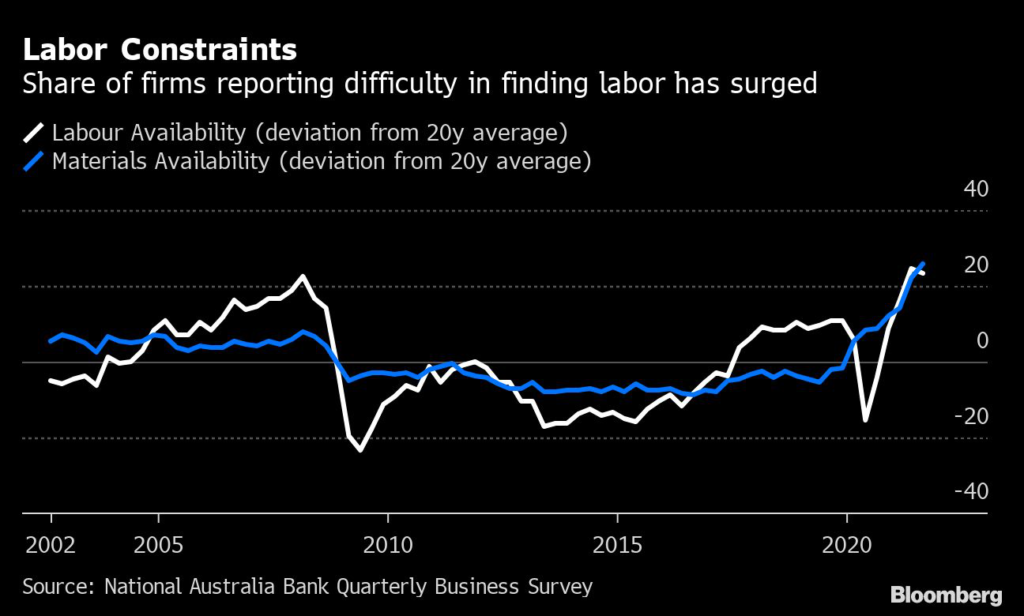(Bloomberg) — Australia’s central bank Governor Philip Lowe is anchoring his bet that he won’t need to raise interest rates until 2024 on a view that unemployment needs to be lower to spur wage gains.
That makes Thursday’s labor market report the next flashpoint for traders. Employment likely increased by 50,000 in October following the reopening of the nation’s populous east coast from virus-induced lockdowns, economists predicted ahead of Thursday’s data. Yet the jobless rate probably rose to 4.8% as Australians resumed hunting for work, swelling the labor force.
The Reserve Bank reckons it will take at least two more years of ultra-low rates to sustainably return inflation to its 2-3% target. Traders view that as excessively dovish — given global price pressures and the local economy’s rapid recovery — and say the RBA could begin tightening as soon as May.
Traders last week won a standoff with the RBA when they forced it to ditch a 0.1% target on the April 2024 government bond in response to soaring yields.
Lowe says traders underestimate the inertia in the labor market that is holding down wages. Economists see labor scarcity emerging in an economy where borders remain closed to temporary workers.
“We have become more upbeat about the Australian economy,” said Belinda Allen, a senior economist at Commonwealth Bank of Australia, which expects the first hike in November 2022. “It’s not only inflation coming through earlier, the labor market is improving faster and consumer spending is picking up.”
A National Australia Bank survey released Tuesday showed the share of firms reporting difficulty in finding suitable labor was the highest since last decade’s mining boom.
Westpac Banking Corp.’s monthly consumer sentiment survey released Wednesday showed expectations for unemployment over the next 12 months fell to the lowest level since the mid-1990s. Employees in real estate, accommodation and food, telecommunications, health care and retail were most confident about the outlook.
“This may be an indication of where labor shortages are likely to emerge in coming months,” said Bill Evans, chief economist at Westpac.
Lowe has said wages probably need to be growing at 3% for inflation to hit the RBA’s 2.5% target midpoint, which he doesn’t expect to happen until late 2023. The last official data showed annual wages growth of 1.7% in the three months through June. The third-quarter report is due out in a week’s time.
While CBA’s Allen expects wages to rise faster than the RBA’s forecasts, others are less confident. Morgan Stanley says 3% pay gains are still some way off, particularly given about 60% of salary agreements are based on long-term contracts.
(Updates with consumer survey’s employment outlook.)
More stories like this are available on bloomberg.com
©2021 Bloomberg L.P.











